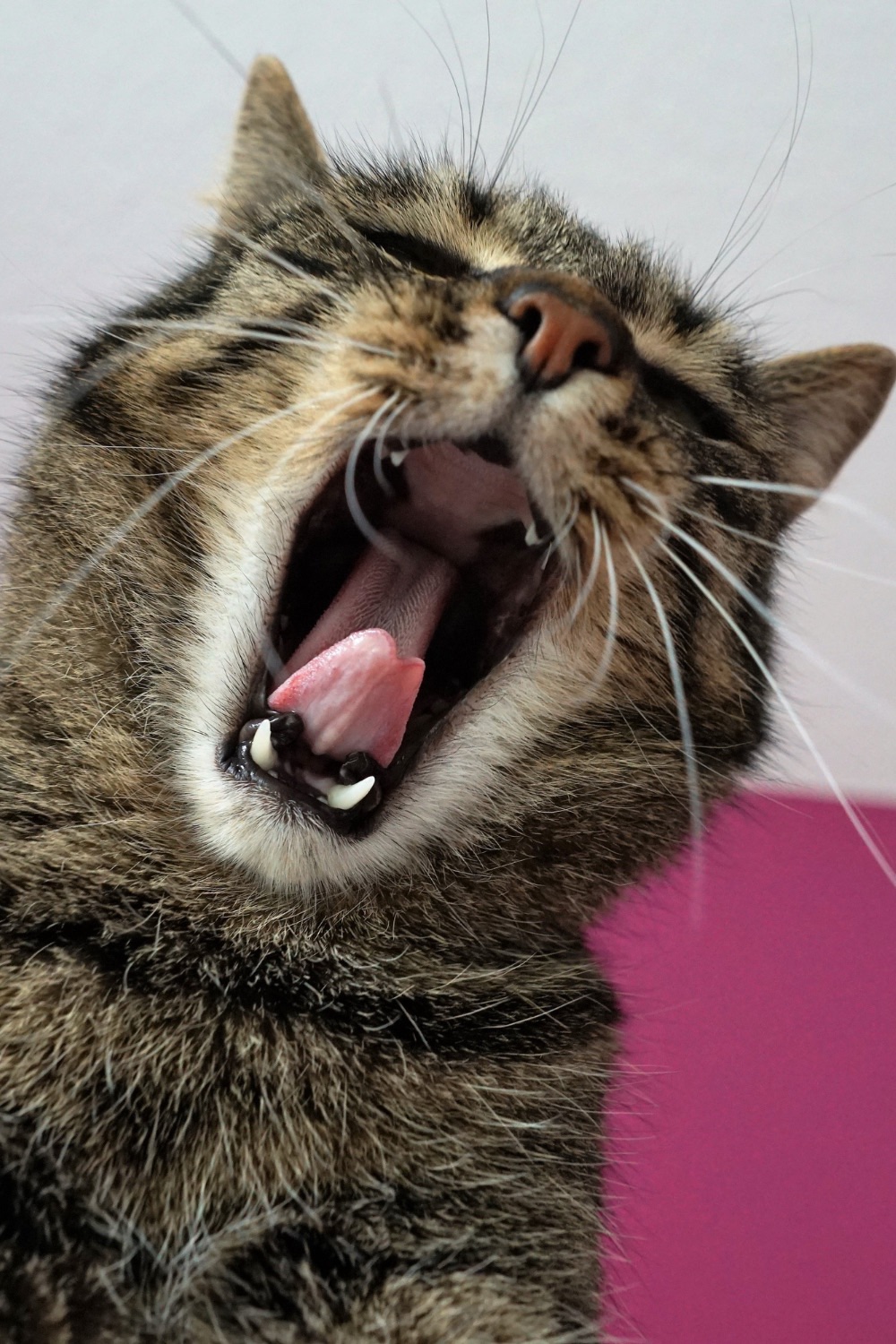“Hack! Hack!”
All cat parents have been woken up by that unpleasant sound in the middle of the night.
The sound of their cat having a hairball.
Yuck.
Hairballs are pretty nasty things to deal with—whether you’re a cat or a human. Luckily, there are ways that you may be able to help your kitty cut down on the number of hairballs she has.
But before we get into it, let’s start with the basics:
What are Hairballs?
Hairballs are balls of, well, hair that a cat vomits. Essentially, they are a matted mess of fur that has become too big to pass through a cat naturally. Because they have become too big to continue through the digestive tract, a cat will throw it up.
Most of the time, they’ll do this on your new white rug or living room carpet. Okay, okay I’m kidding—that’s not a requirement of all hairballs (but it does sometimes feel that way!).
What Causes Hairballs in Cats?
Hairballs are caused by, you guessed it, excess hair that is eaten by your cat. All cats ingest some of their hair each day through regular bathing, etc. However, some cats may take in a little too much through excessive grooming, anxiety, or any other condition.
If your cat is experiencing hairballs, you need to take them to their veterinarian ASAP to determine the root cause of the problem. Seriously. Stop reading this blog now and make an appointment.
I’ll wait.
Alright, now that you’ve spoken with your vet, let’s discuss some daily habits you can start to help reduce your cat’s hairballs.
Friendly Reminder: You need to follow all instructions given to you by your trusted vet. Always consult them first and do everything they tell you. Seriously.
Daily Tips for Reducing Cat Hairballs
Brush Your Cat
All that shedding hair from your cat has to go somewhere. Try to keep it out of their mouth by brushing them daily. When you do, you’ll help take that loose hair off of them, which should hopefully cut down the number of hairballs they get.
Feed Them a Healthy Diet
Your cat needs to be eating high-quality food in order to have a healthy digestive tract that can push through any hair that accumulates in their system naturally. Again, you need to consult your vet for what exactly to feed your kitty.
Supplement with Hairball Treats
My cats LOVE Inaba Churu’s Hairball Treat Tubes. They’re specially formulated to help hairballs slide on through a cat’s system—plus, Rainbow and Belle go crazy for them. Talk to your vet (notice a pattern here?) about which hairball treats make sense for your kitty, and try to find one she will enjoy.
What to Do if Your Cat Gets a Hairball
Here’s the deal—your cat will probably end up getting a hairball, even if you do everything your vet tells you to. It happens. Here’s what you can do when it does:
Give Them Some Love
Having a hairball is no fun for your cat. Give them a little extra patience—and a lot of extra kisses—until they feel better.
Clean it Up
Don’t leave hairballs sitting around on the floor. Clean them up as quickly as possible to reduce stain damage and to keep any other pets from eating them.
I’m looking at you, dogs.
Make Sure They Have Plenty of Water
When a cat has a hairball, they may also vomit up some liquid. This can lead to dehydration. Always keep clean, fresh water out for your cat so that they can get a drink when they need it.
Make Food Available
After Rainbow has a hairball, she acts like she’s starving and gobbles up food. I’m not sure if other cats do this, as well, but I’ve learned to always have her favorite food available after she has a hairball so that she can feel better—and so that I can avoid a hangry cat!
Monitor Them Closely
A cat throwing anything up isn’t normal.
Period.
If your cat vomits—even if it is a hairball—pay close to attention to them and CONTACT YOUR VET. You can never be too safe with your cat’s health. Putting their health first and taking it seriously with your petcare provider is the only way to go.
I know a lot about cats, but I’m not a veterinarian or animal welfare professional. Please don’t take any of the statements I give as medical advice and do always consult your trusted vet, rescue group, or welfare professional, especially if your cat is experiencing behavioral or physical challenges.
